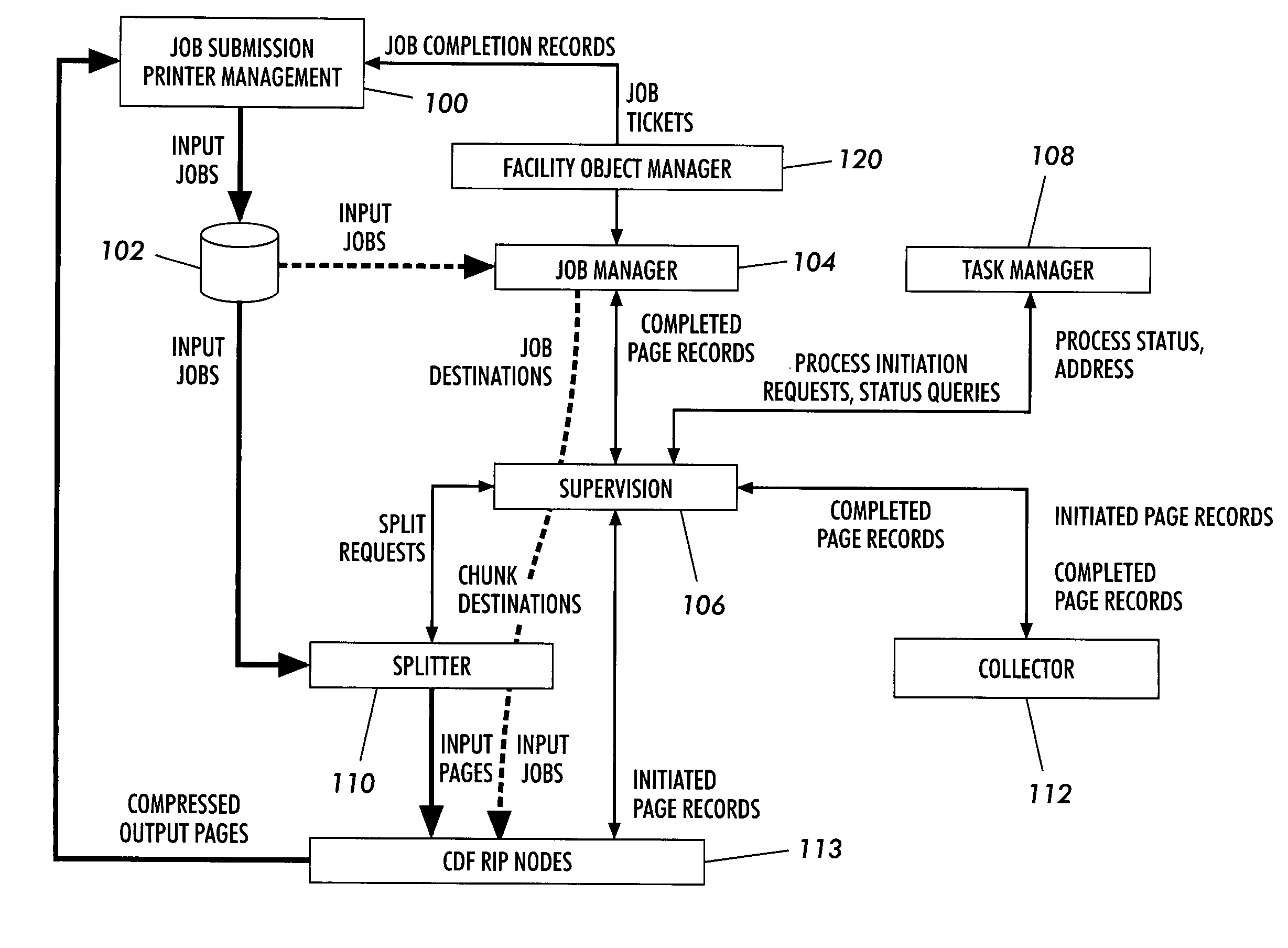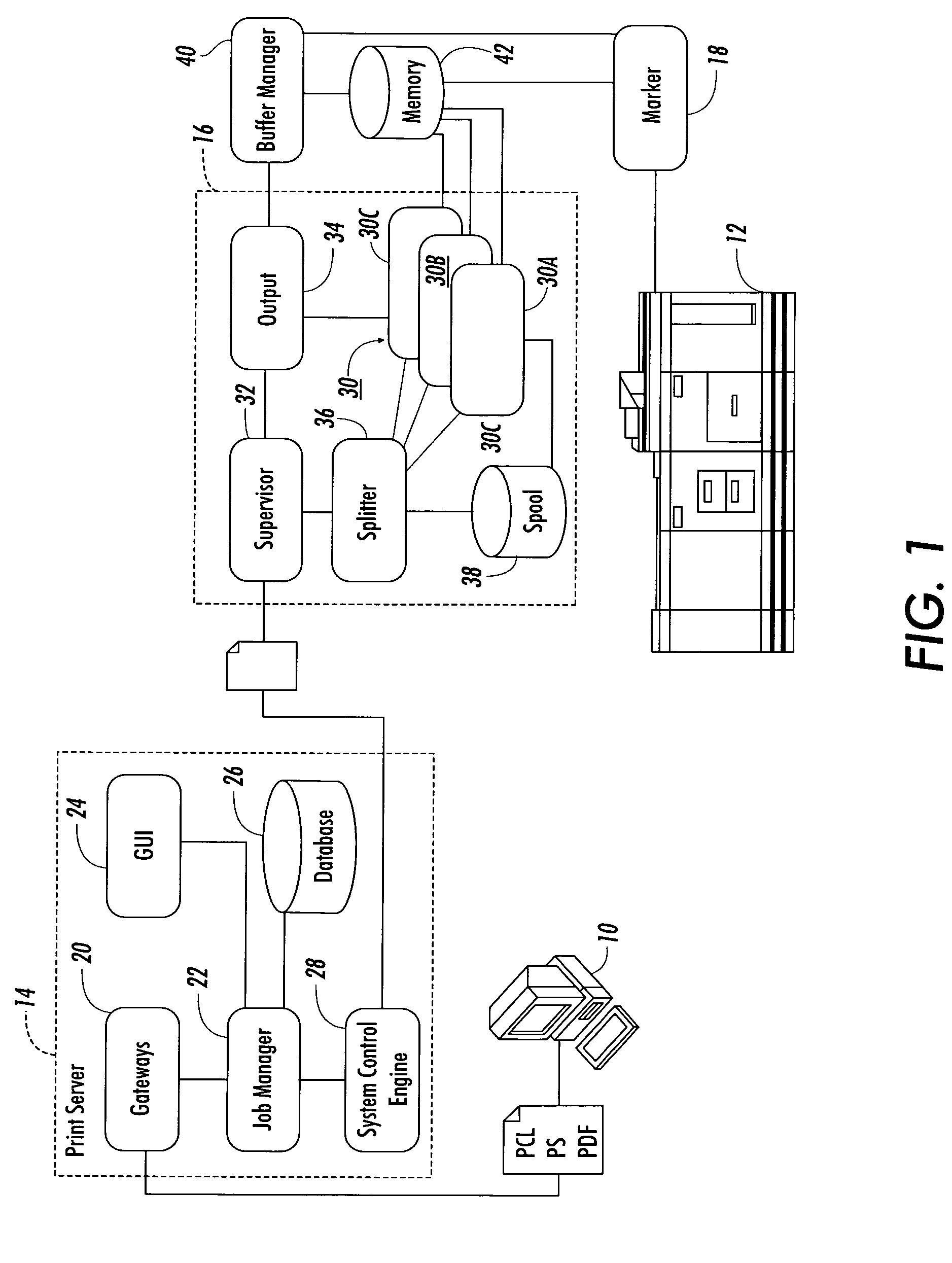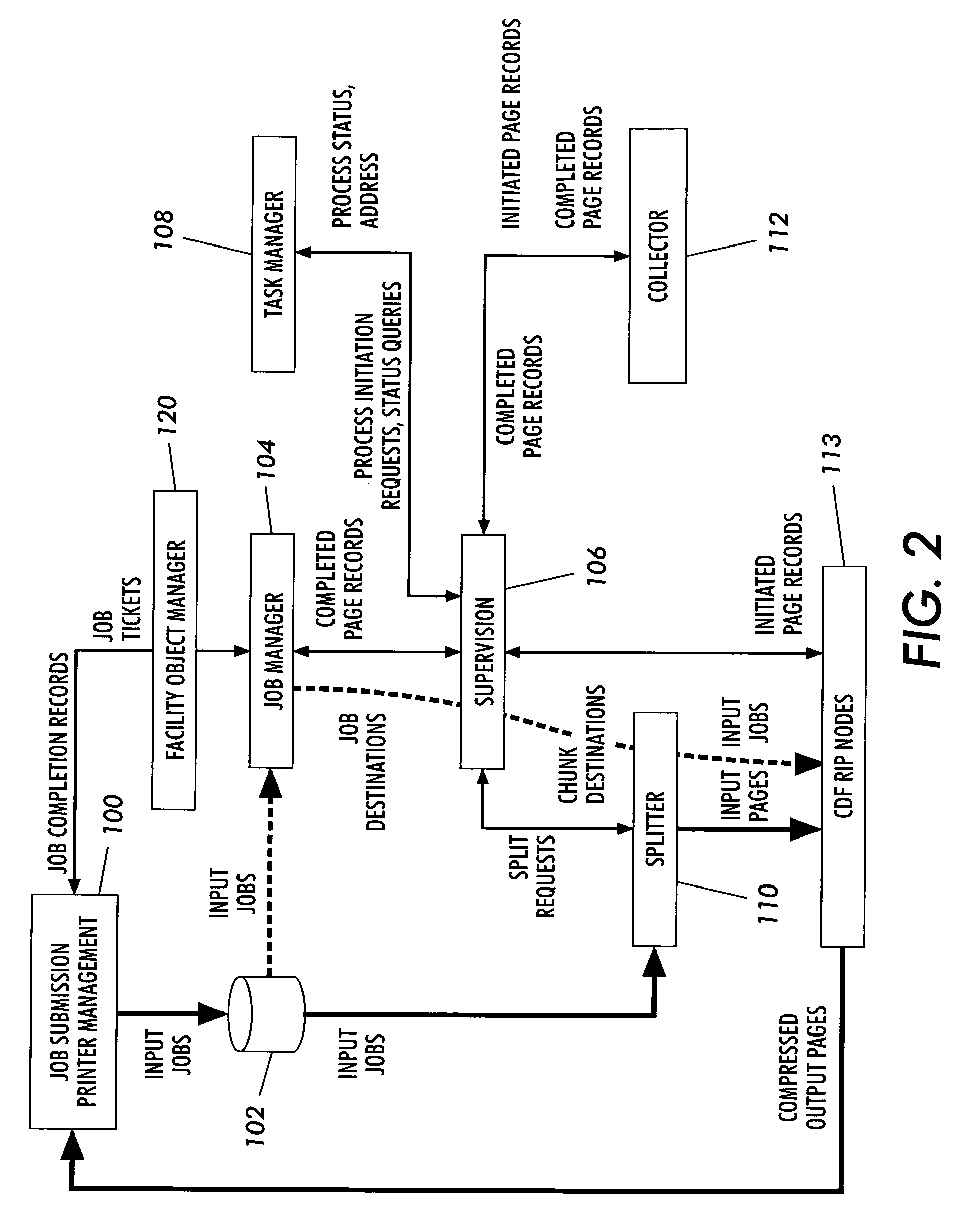Parallel printing system having modes for auto-recovery, auto-discovery of resources, and parallel processing of unprotected postscript jobs
a printing system and parallel processing technology, applied in the field of printing systems, can solve the problems of limited processing speed, limited software optimization, and high processing cost, and achieve the effects of reducing processing cost, improving processing efficiency, and improving processing efficiency
- Summary
- Abstract
- Description
- Claims
- Application Information
AI Technical Summary
Benefits of technology
Problems solved by technology
Method used
Image
Examples
Embodiment Construction
[0029]While the present invention will hereinafter be described in connection with preferred embodiments thereof, it will be understood that it is not intended to limit the invention to those embodiments. On the contrary, it is intended to cover all alternatives, modifications and equivalents as may be included within the spirit and scope of the invention as defined in the appended claims.
[0030]The present invention addresses the continuing need for faster printing systems—particularly systems where every page can be color and different. The system exploits parallelism to facilitate its speed, but especially an implementation of parallelism not known in prior art printing systems which had been limited to job parallelism or page parallelism. The subject invention uses an intermediate level of parallelism herein defined as “chunk” parallelism. A chunk of print job data is intended to comprise a collection of rasterizable data of at least one page and not more than one job. Job parall...
PUM
 Login to View More
Login to View More Abstract
Description
Claims
Application Information
 Login to View More
Login to View More - R&D
- Intellectual Property
- Life Sciences
- Materials
- Tech Scout
- Unparalleled Data Quality
- Higher Quality Content
- 60% Fewer Hallucinations
Browse by: Latest US Patents, China's latest patents, Technical Efficacy Thesaurus, Application Domain, Technology Topic, Popular Technical Reports.
© 2025 PatSnap. All rights reserved.Legal|Privacy policy|Modern Slavery Act Transparency Statement|Sitemap|About US| Contact US: help@patsnap.com



